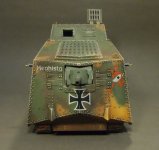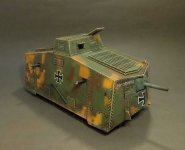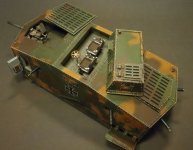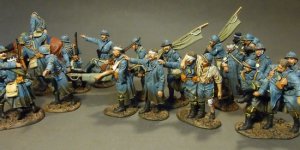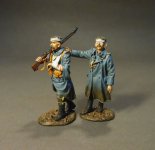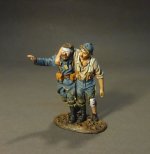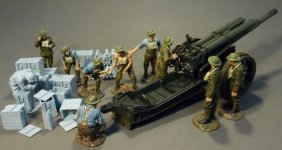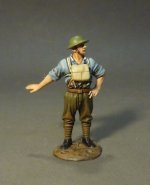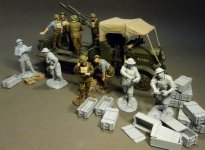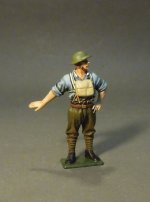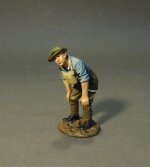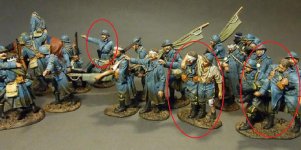THE GREAT WAR 1914-1918
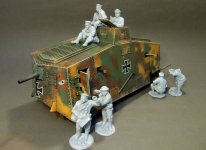
The STURMPANZER A7V was a tank introduced by Germany in 1918, during World War I. One hundred chassis were ordered in early 1917, ten to be finished as fighting vehicles with armoured bodies, and the remainder as cargo carriers. The number to be armoured was later increased to 20. They were used in action from March to October of that year, and were the only tanks produced by Germany in World War I to be used in operations.
Unlike modern tanks, the A7V has no turret. Instead, it has a cupola for the commander and driver, and its main gun, a 57mm Maxim-Nordenfelt, is carried in a mounting in the front, allowing limited traverse. Six Maxim 08 machine guns are carried in mountings, two on each side and two to the rear.
The crew normally consisted of up to seventeen soldiers and one officer: commander (officer, typically a lieutenant), driver, mechanic, mechanic/signaller, twelve infantrymen (six machine gunners, six loaders), and two artillerymen (main gunner and loader).
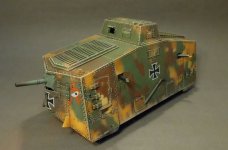
GWG-01
THE GREAT WAR,1914-1918
STURMPANZER A7V,
506 MEPHISTO,
(3 pcs)
Model Size 11“ x 4 1/4“ x 5“
Model Weight 931g
Sturmpanzer A7V, named “Mephisto”, and numbered 506, was originally a 1st Lot, standard-production model produced by the Rochling factory, and was initially a female tank, only armed with machine guns. It was to be converted to a “buck-mount” male, and is today the only original A7V tank to survive.
In April 1918, the tank was issued to Abt.3, and was repainted and named “Mephisto”, with its upper left prow decorated just before the Battle of Villers-Bretonneux, with the emblem of a red devil running with a snatched British rhomboid tank.
It was to participate in the Battle of Villers-Bretonneux, but after a successful advance, which saw it take a large number of prisoners, it became disabled as it plunged into a large shell hole. The crew abandoned the tank, and went on to fight as an assault party.
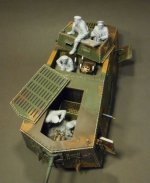
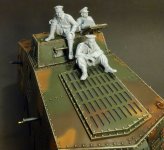
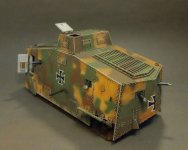
Much more to follow.......................................

The STURMPANZER A7V was a tank introduced by Germany in 1918, during World War I. One hundred chassis were ordered in early 1917, ten to be finished as fighting vehicles with armoured bodies, and the remainder as cargo carriers. The number to be armoured was later increased to 20. They were used in action from March to October of that year, and were the only tanks produced by Germany in World War I to be used in operations.
Unlike modern tanks, the A7V has no turret. Instead, it has a cupola for the commander and driver, and its main gun, a 57mm Maxim-Nordenfelt, is carried in a mounting in the front, allowing limited traverse. Six Maxim 08 machine guns are carried in mountings, two on each side and two to the rear.
The crew normally consisted of up to seventeen soldiers and one officer: commander (officer, typically a lieutenant), driver, mechanic, mechanic/signaller, twelve infantrymen (six machine gunners, six loaders), and two artillerymen (main gunner and loader).

GWG-01
THE GREAT WAR,1914-1918
STURMPANZER A7V,
506 MEPHISTO,
(3 pcs)
Model Size 11“ x 4 1/4“ x 5“
Model Weight 931g
Sturmpanzer A7V, named “Mephisto”, and numbered 506, was originally a 1st Lot, standard-production model produced by the Rochling factory, and was initially a female tank, only armed with machine guns. It was to be converted to a “buck-mount” male, and is today the only original A7V tank to survive.
In April 1918, the tank was issued to Abt.3, and was repainted and named “Mephisto”, with its upper left prow decorated just before the Battle of Villers-Bretonneux, with the emblem of a red devil running with a snatched British rhomboid tank.
It was to participate in the Battle of Villers-Bretonneux, but after a successful advance, which saw it take a large number of prisoners, it became disabled as it plunged into a large shell hole. The crew abandoned the tank, and went on to fight as an assault party.



Much more to follow.......................................


